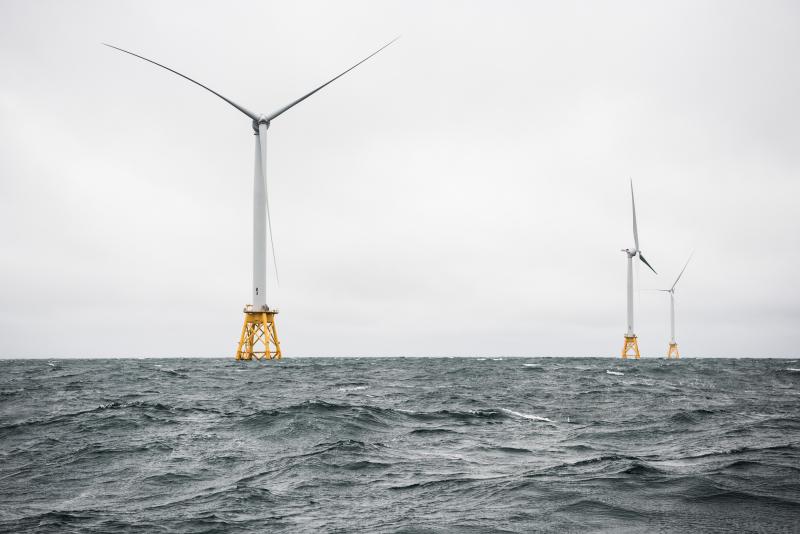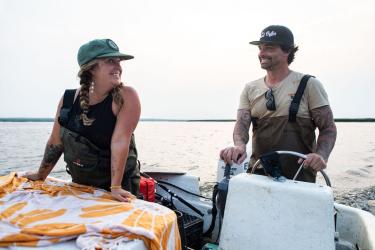NOAA Fisheries and the Bureau of Ocean Energy Management released a joint draft strategy to protect and promote the recovery of North Atlantic right whales while responsibly developing offshore wind energy. The draft strategy is now available for public comment no later than December 4, 2022. It outlines how the agencies will collaborate and improve science and information to support the Administration’s goal of developing offshore wind while protecting biodiversity and promoting ocean co-use. The draft strategy will also provide offshore wind developers with guidance on mitigation measures that will assist them in navigating the regulatory process.
“As we face the ongoing challenges of climate change, this strategy provides a strong foundation to help us advance renewable energy while also working to protect and recover North Atlantic right whales, and the ecosystem they depend on,” said Janet Coit, Assistant Administrator for NOAA Fisheries and Acting Assistant Secretary of Commerce for Oceans and Atmosphere at NOAA. “Responsible development of renewable energy sources and protecting endangered North Atlantic right whales are priorities both agencies share.”
NOAA Fisheries and our partners are dedicated to protecting and recovering North Atlantic right whales. Their population includes fewer than 350 individuals and fewer than 70 reproductively active females and has been experiencing an Unusual Mortality Event since 2017. Climate change is affecting every aspect of right whales’ survival—changing their habitat, their migratory patterns, and the location and availability of their prey. It is even increasing their risk of becoming entangled in fishing gear or being struck by vessels.
Offshore wind development is also rapidly expanding along the Atlantic coast of the United States, especially from Massachusetts to North Carolina. North Atlantic right whales’ habitat and migration routes are primarily in Atlantic coastal waters on the continental shelf where offshore wind leases exist or are planned. Working together on this draft strategy leverages the resources and expertise of both agencies and allows the agencies. It will allow us to collect, apply, and use the best available scientific information to inform offshore wind management decisions.
“This draft strategy focuses on improving the science and integrating past, present, and future efforts related to North Atlantic right whales and offshore wind development,” said Dr. Jon Hare, the Director of NOAA’s Northeast Fisheries Science Center and one of the lead authors of the draft strategy. “We also identify preliminary mitigation measures related to offshore wind energy project planning, leasing, and siting, site characterization, and unexploded ordnance surveys, construction and operation, and project-specific monitoring, and are looking for public comment on these measures and on the strategy overall.”
The draft strategy also identifies project-specific and regional preliminary monitoring measures. These mitigation measures include the types of requirements that regulatory agencies and project proponents consider for individual projects, thereby assisting offshore wind developers to navigate the permitting process. The list of measures is not comprehensive and does not supersede measures that may be required by the agencies during regulatory processes such as construction and operations plan approvals, Endangered Species Act consultations, or incidental take authorizations.
Following review of public comments, the draft strategy will be finalized. The final strategy will be a living document, periodically evaluated and updated as new information becomes available.
View the draft strategy and information on how to submit comments
The ambitious deployment of offshore wind energy is a critical component of U.S. efforts to combat the climate crisis and build a clean energy economy. The Biden-Harris Administration is committed to addressing the nation’s climate crisis by deploying 30 gigawatts of offshore wind energy by 2030.
BOEM is the lead federal agency responsible for offshore energy exploration and development in the United States. To date, BOEM has leased approximately 1.7 million acres in the northeast and Mid-Atlantic U.S. Outer Continental Shelf for offshore wind development. There are 25 active leases in the Atlantic from Cape Cod to Cape Hatteras.
NOAA Fisheries works with BOEM, other federal agencies, tribes, state agencies, and stakeholders to assess how offshore wind projects affect endangered and threatened species, marine mammals, fisheries, marine habitats, and fishing communities, and protect these important resources.




